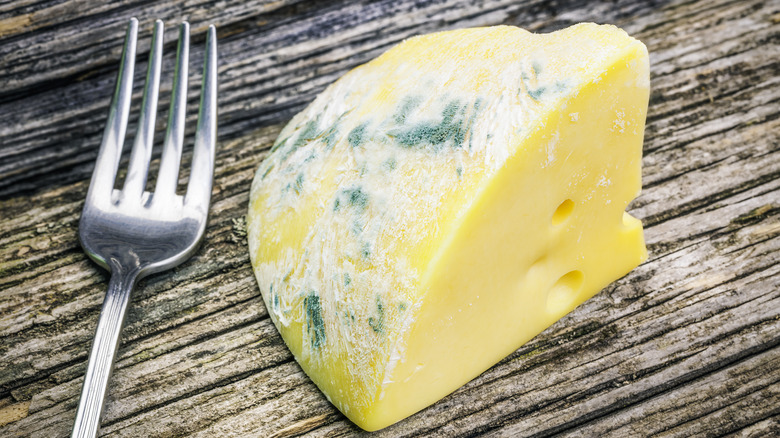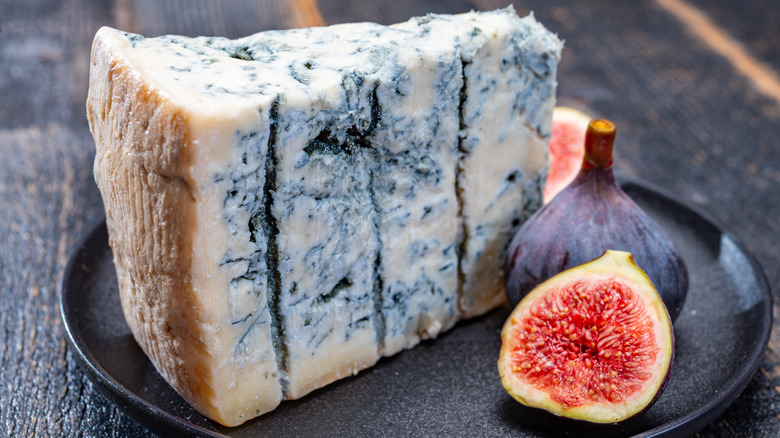Is Cheese Really Made From Mold?
Usually the last thing you want to see on a delicious piece of cheese before it goes into your mouth is mold. In many cases, mold can look like fuzzy, discolored spots (via Healthline). They are a result of fungus feeding off of the sugars in your food. Mold can give foods a bad odor, and may even go deeper than just the surface of the food they're growing on. They can be dangerous to eat because they are some of the first signs that a food has spoiled. Fortunately, not all moldy cheeses are bad. Some cheeses are even purposely made with mold to give them a distinct flavor, odor, texture, or color. So how are you supposed to know which moldy cheeses are safe to eat, and which need to be tossed in the trash?
Most cheeses are made by using the enzyme rennet to curdle milk. The liquid that's left over, whey, is often discarded. The remaining curds are aged to make cheese. While all cheese uses some sort of microorganism to produce its flavor and other characteristics, a few types specifically use mold to give them their distinct odor and taste. Brie and camembert are made with white surface mold and have mold mixed into them as they're being made that help give them a creamy texture (via USDA). Cheeses that have distinct blue veining, like blue, Gorgonzola, Stilton, and Roquefort, are made by injecting the curds with the mold Penicillium roqueforti.
Not all mold is dangerous
While it may seem like a bad idea to eat cheese that has mold on it, these types of cheese are usually safe for adults to eat. The exception to this rule is if you have a weakened immune system, are elderly, or are pregnant (via Mayo Clinic). It's possible that cheeses made with mold could make you sick if you fall into one of these categories, so it might be best to avoid them.
You may not have one of the intentionally moldy cheeses in your refrigerator, but it's likely you've encountered cheese with mold growing on its surface. Moist conditions can lead to mold growth, so it's important to keep cheeses stored properly. If you have soft cheeses like cottage, ricotta, or cream cheese that show signs of mold, throw them out right away. But perhaps surprisingly, most of the common harder cheeses like cheddar, parmesan, and Swiss can actually be salvaged if they've got a little bit of mold growth. This is because it's unlikely that the mold has been able to grow beneath the surface of the cheese. In this case, it's okay to cut off the moldy part. Some experts recommend cutting an inch around and below the mold to be sure that you've gotten it all (via Bon Appetit). But if the thought of eating once-moldy cheese makes your stomach turn, it's also just fine to toss it and skip that grilled cheese sandwich.

